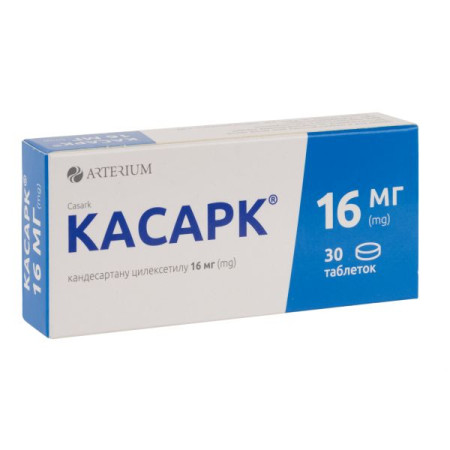Vitaxon film-coated tablets No. 60

Instructions for Vitaxon film-coated tablets No. 60
Composition
active ingredients: benfotiamine, pyridoxine hydrochloride;
1 tablet contains: benfotiamine – 100 mg calculated on 100% dry matter, pyridoxine hydrochloride – 100 mg calculated on 100% dry matter;
excipients: microcrystalline cellulose, corn starch, povidone, calcium stearate, talc, colloidal anhydrous silicon dioxide;
film shell Opadry II 85 F 18422: polyvinyl alcohol, polyethylene glycol, talc, titanium dioxide (E 171).
Dosage form
Film-coated tablets.
Main physicochemical properties: white or almost white, round tablets with a biconvex surface, film-coated.
Pharmacotherapeutic group
Vitamin B1 preparations, plain and in combination with vitamins B6 and B12. ATX code A11D B.
Pharmacological properties
Pharmacodynamics
Neurotropic B vitamins have a beneficial effect on the course of inflammatory and degenerative diseases of the nerves and musculoskeletal system. They should be used to eliminate deficiency states, in large doses the vitamins have analgesic properties, help improve blood circulation and normalize the functioning of the nervous system and the process of hematopoiesis.
Pharmacokinetics
Vitamin B6 and its derivatives are mostly rapidly absorbed in the upper digestive tract by passive diffusion and excreted within 2–5 hours.
Indication
For neurological diseases caused by proven deficiency of vitamins B1, B6.
Contraindication
Hypersensitivity to the components of the drug.
Taking vitamin B1 is contraindicated in allergic reactions.
Taking vitamin B6 is contraindicated in cases of gastric and duodenal ulcers in the acute stage (since increased acidity of gastric juice is possible).
Pregnancy or breastfeeding.
Interaction with other medicinal products and other types of interactions
Thiamine is inactivated by 5-fluorouracil, as the latter competitively inhibits the phosphorylation of thiamine to thiamine pyrophosphate. Antacids reduce thiamine absorption.
Loop diuretics (e.g. furosemide), which inhibit tubular reabsorption, may, during long-term therapy, cause increased thiamine excretion and thus reduce thiamine levels.
When taken simultaneously with levodopa, vitamin B6 may reduce the effect of levodopa.
Concomitant use of pyridoxine antagonists (e.g. isoniazid, hydralazine, D-penicillinamine or cycloserine), alcohol, and long-term use of oral contraceptives containing estrogens may lead to vitamin B6 deficiency.
Drinking alcohol and black tea reduces thiamine absorption.
Benfotiamine is incompatible with oxidizing and reducing compounds: mercuric chloride, iodide, carbonate, acetate, tannic acid, ferric ammonium citrate, as it is inactivated in their presence. Copper accelerates the decomposition of benfotiamine; in addition, thiamine loses its effect with increasing pH values (more than 3).
Beverages containing sulfites (e.g. wine) increase the degradation of thiamine.
Pyridoxine may decrease the effectiveness of altretamine.
Application features
The question of using the drug Vitaxon for the treatment of patients with severe and acute decompensated heart failure is decided by the doctor individually, taking into account the patient's condition.
Since the drug contains vitamin B6, it is necessary to prescribe this drug with caution to patients with a history of gastric and duodenal ulcers, severe liver and kidney failure.
The drug should not be used in severe or acute forms of decompensated cardiac activity and angina pectoris.
If signs of peripheral sensory neuropathy (paresthesia) appear, the dosage should be reviewed and the use of Vitaxon should be discontinued, if necessary. Neuropathies have been observed with long-term use (more than 6–12 months) of daily doses exceeding 50 mg of vitamin B6, as well as with short-term use (more than 2 months) of more than 1 g of vitamin B6 per day, therefore constant monitoring is recommended with long-term use.
Ability to influence reaction speed when driving vehicles or other mechanisms
Since the drug may cause side effects such as dizziness, headache, and tachycardia in some patients, caution should be exercised when driving or operating other machinery.
Use during pregnancy or breastfeeding
The daily requirement for vitamin B6 during pregnancy or breastfeeding is up to 2.5 mg.
During pregnancy or breastfeeding, daily intake of vitamin B1 at a dose of 1.4–1.6 mg and vitamin B6 at a dose of 2.4–2.6 mg is recommended.
There is no evidence to support the use of doses higher than the recommended daily doses.
Vitamins B1 and B6 pass into breast milk.
High doses of vitamin B6 may inhibit milk production. The product contains 100 mg of vitamin B6, so it should not be used during pregnancy or breastfeeding.
Method of administration and doses
Apply internally, drinking plenty of liquid.
The recommended dose is 1 tablet per day. In individual cases, the dose can be increased and taken 1 tablet 3 times a day.
The tablets should be taken whole with liquid after meals.
The duration of the course of treatment is determined by the doctor individually in each case. After the maximum period of treatment (4 weeks), a decision is made to adjust and reduce the dose of the drug.
Children
The efficacy and safety of the drug in children have not been established, so it should not be prescribed to this age group of patients.
Overdose
Chronic use in high doses may cause deterioration of liver enzyme activity, heart pain, and hypercoagulation. High doses of vitamin B1 exhibit a curare-like effect.
Vitamin B1
Thiamine has a wide therapeutic range. Very high doses (more than 10 g) exhibit a ganglion-blocking effect similar to that of curare and inhibit nerve impulse conduction.
Vitamin B6
The toxicity of vitamin B6 is considered very low. However, long-term use (more than 6–12 months) of vitamin B6 in doses exceeding 50 mg per day may cause peripheral sensory neuropathy.
Continuous use of vitamin B6 in doses exceeding 1 g per day for longer than 2 months may lead to neurotoxic effects.
With long-term use of vitamin B1 in doses exceeding 2 g per day, neuropathies with ataxia and sensitivity disorders, cerebral seizures with changes in EEG, and in some cases, hypochromic anemia and seborrheic dermatitis have been recorded.
In case of overdose, the symptoms of the side effects of the drug increase.
Treatment: gastric lavage, use of activated charcoal. Symptomatic therapy.
Adverse reactions
On the part of the digestive tract: nausea, vomiting, diarrhea, abdominal pain, increased acidity of gastric juice.
Cardiovascular system: tachycardia.
Immune system disorders: hypersensitivity reactions, including anaphylactic shock; anaphylaxis; urticaria.
Skin: skin rashes, itching.
In extremely rare cases, there is a state of shock.
Nervous system: long-term use (over 6–12 months) in doses of more than 50 mg of vitamin B6 daily may lead to peripheral sensory neuropathy, nervous excitement, dizziness, and headache.
On the part of the endocrine system: prolactin secretion is inhibited.
Expiration date
3 years.
Do not use the drug after the expiration date indicated on the package.
Storage conditions
Store in the original packaging at a temperature not exceeding 25 °C.
Keep out of reach of children.
Packaging
10 tablets in a blister. 6 blisters in a pack.
Vacation category
Without a prescription.
Producer
JSC "Farmak".
Location of the manufacturer and its business address
Ukraine, 04080, Kyiv, Kyrylivska St., 74.
There are no reviews for this product.
There are no reviews for this product, be the first to leave your review.
No questions about this product, be the first and ask your question.







